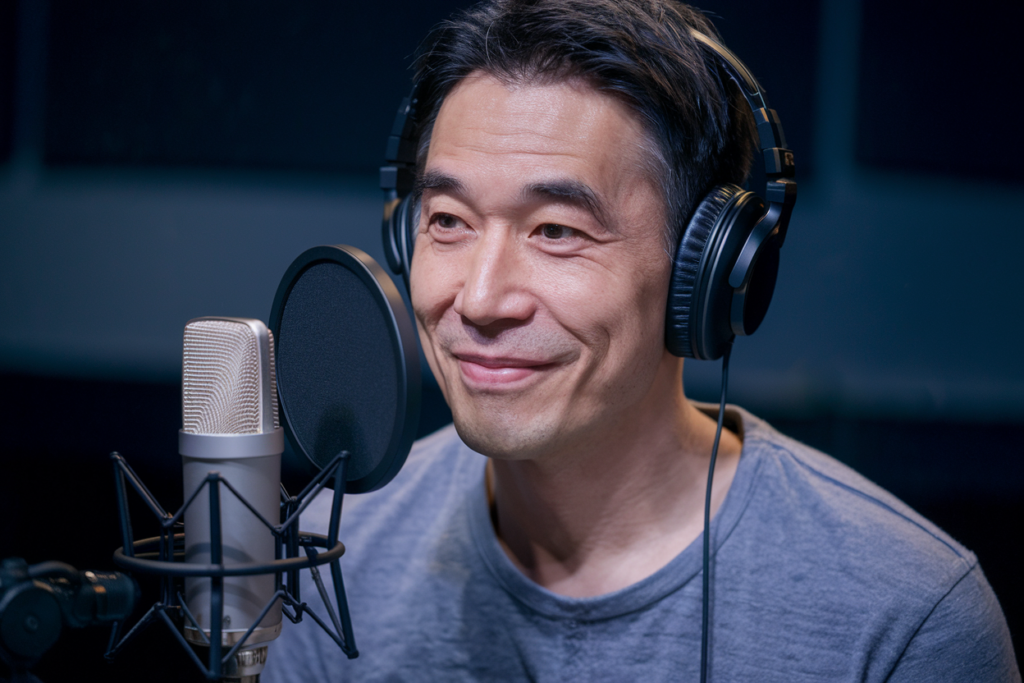Key Takeaways
- Diverse Regional Dialects: Japan features numerous dialects, or “hōgen,” each reflecting local culture, history, and unique speech patterns that enhance the understanding of regional identities.
- Influence of Geography: Geographic isolation has shaped distinct dialects across Japan, with urban areas adopting more standardized forms while rural regions maintain original linguistic characteristics.
- Cultural Insights: Variations in vocabulary and pronunciation provide valuable insights into local customs and lifestyles, enriching the overall appreciation of Japan’s diverse heritage.
- Historical Context: The evolution of the Japanese language includes influences from ancient Japonic languages and interactions with neighboring cultures, contributing to the emergence of regional dialects.
- Preservation Efforts: Communities actively work to preserve their dialects through education, cultural events, and media representation, fostering pride in local heritage among younger generations.
- Enhanced Appreciation: Engaging with different dialects allows deeper connections with Japanese culture and people, making experiences more meaningful when exploring the country or enjoying its media.
Ever wondered why Japanese sounds so different from region to region? The rich tapestry of the Japanese language is woven with countless variations, each reflecting its unique culture and history. From the melodic tones of Kansai dialect to the sharp accents of Tohoku, understanding these differences can deepen your appreciation for Japan’s diverse heritage.
Overview of Japanese Language Variations
Japanese language variations showcase the rich tapestry of culture and history across Japan. Each region boasts unique dialects, known as “hōgen,” that reflect local traditions and lifestyles. These dialects often differ not just in pronunciation but also in vocabulary and grammar.
For instance, the Kansai dialect is famous for its melodic intonation, making conversations sound lively and engaging. In contrast, Tohoku’s sharp accents convey a distinct identity tied to its rural roots. Understanding these regional differences can deepen your appreciation of Japan’s diverse heritage.
Moreover, some regions incorporate specific terms related to local customs or industries. This localized vocabulary offers insights into daily life that you might miss otherwise. Listening to voiceovers featuring various dialects can help you grasp these nuances more effectively.
In addition, exposure to different speech patterns enhances your ability to connect with the culture on a deeper level. Whether you’re exploring opportunities in voice acting or simply enjoying media from Japan, recognizing these variations enriches your experience.
So next time you hear a voiceover in a particular Japanese dialect, consider how it reflects the speaker’s background and environment. Embracing these linguistic differences opens doors to understanding Japan’s vibrant culture even better.
Historical Context
The historical development of the Japanese language showcases its rich tapestry woven from various influences and regional characteristics. Understanding this context sheds light on how dialects emerged across Japan.
Origin of the Japanese Language
The origins of the Japanese language trace back to ancient times, influenced by interactions with neighboring cultures. Early forms were rooted in Japonic languages, which evolved over centuries. The introduction of Chinese characters during the 5th century significantly impacted vocabulary and writing systems, creating a blend that persists today. This foundation laid the groundwork for regional variations as communities adapted language to reflect their unique identities.
Influence of Regional Dialects
Regional dialects, or “hōgen,” emerged due to geographical isolation and cultural differences among areas. Each dialect carries distinct phonetic traits, vocabulary choices, and grammatical structures shaped by local customs and lifestyles. For example, Kansai’s melodic tones contrast sharply with Tohoku’s sharp accents, illustrating how environment influences speech patterns. Exposure to these variations enriches understanding not just of language but also cultural nuances inherent in daily life across Japan.
Major Dialects in Japan
Japan’s language landscape is rich with diverse dialects, each showcasing unique cultural nuances and historical influences. Understanding these major dialects can enhance your appreciation for the regional differences that shape communication across the country.
Kansai Dialect
Kansai dialect, or “Kansai-ben,” is spoken primarily in the Osaka, Kyoto, and Kobe areas. Known for its melodic intonation and distinct vocabulary, this dialect often sounds more relaxed compared to Tokyo’s standard Japanese. For instance, while the standard phrase “arigatou” (thank you) is commonly used nationwide, Kansai speakers might say “ookini.” The humor embedded in Kansai culture often emerges through wordplay and puns unique to this region. This vibrant style of speaking reflects the lively spirit of its people.
Kanto Dialect
The Kanto dialect includes Tokyo and surrounding prefectures. It serves as the basis for standard Japanese taught in schools and used in media. Characteristics include a clear articulation of consonants and a relatively flat intonation pattern. While it may lack some of the charm found in other regions’ dialects, its widespread usage makes it essential for understanding Japan’s mainstream culture. You’ll notice that phrases like “daijoubu” (it’s okay) resonate throughout various aspects of daily life here.
Hokkaido Dialect
Hokkaido’s dialect differs significantly from those on Honshu Island due to geographical isolation and varying influences from indigenous Ainu language elements. Local expressions often incorporate unique vocabulary not found elsewhere in Japan. For example, people might say “nani ga arukoto?” meaning “What’s going on?” This casual tone encourages friendly interactions among locals while also representing Hokkaido’s distinctive cultural identity shaped by both nature and community values.
Exploring these major dialects provides insights into Japan’s rich tapestry of languages, illustrating how geography shapes communication styles across regions.
Impact of Geography on Language Variations
Geography significantly influences the variations in the Japanese language, shaping dialects that reflect local identities. These differences often stem from historical developments and community interactions.
Urban vs. Rural Speech
Urban areas like Tokyo showcase a more standardized form of Japanese, often viewed as the “neutral” or standard dialect. This speech tends to emphasize clarity and precision, making it ideal for communication in commercial settings. In contrast, rural regions maintain distinctive features in their dialects, which can include unique vocabulary and intonation patterns. For instance, you might hear softer tones and specific phrases that provide insight into local culture and traditions. As a result, understanding these nuances fosters deeper connections with locals.
Islands and Their Unique Variations
Japan’s numerous islands each come with their own linguistic quirks due to geographical isolation. For example, Okinawa’s dialect incorporates elements not found on the main islands, reflecting its unique history and cultural influences. The islanders use distinct expressions that resonate with their surroundings—expressions shaped by both environment and lifestyle. Such variations highlight how geography doesn’t just influence accents; it shapes entire ways of life reflected in everyday speech patterns.
These geographic impacts on language create an intricate tapestry of sounds across Japan—a reflection of its rich heritage waiting for exploration through conversation and interaction.
Preservation of Dialects
Preservation of dialects in Japan highlights the importance of regional identities. Each dialect, or “hōgen,” carries unique phonetic traits, vocabulary, and grammar that reflect local culture and history. Efforts to maintain these linguistic variations exist through education and cultural initiatives.
Communities across Japan often celebrate their dialects through festivals and events. These gatherings foster pride in local heritage while encouraging younger generations to embrace their roots. Schools incorporate local language lessons to ensure that students recognize the value of their dialects.
Media plays a significant role too. Television programs and radio shows frequently feature regional voices, showcasing diverse accents and expressions. Such exposure not only entertains but also educates audiences about the richness of Japanese language variations.
Digital platforms further support preservation efforts by connecting communities online. Social media allows speakers from various regions to share experiences and promote their dialects creatively. This digital interaction helps keep traditional language alive amid globalization’s pressures.
In urban areas like Tokyo, standard Japanese dominates communication; however, rural regions continue to uphold distinctive speech patterns. The contrast between these environments illustrates how geography influences language use and preservation strategies among different populations.
Understanding the significance of preserving these dialects enhances your appreciation for Japan’s cultural tapestry. Engaging with locals who speak different dialects can deepen your experience, allowing you to connect on a more personal level with the rich heritage they embody.
Conclusion
Exploring the variations of the Japanese language opens a window into the rich tapestry of Japan’s culture. Each dialect you encounter tells a story of its people, history, and environment. By immersing yourself in these linguistic differences, you enhance your understanding and appreciation for regional identities.
As Japan navigates through modern influences, preserving these unique dialects becomes increasingly important. Engaging with local speech not only enriches your travel experiences but also fosters connections with those who share their heritage. Embrace the beauty of Japan’s diverse languages as they reflect the heart and soul of its communities.
Frequently Asked Questions
What are the main dialects of the Japanese language?
The main dialects of Japanese include Kansai, Kanto, Tohoku, and Hokkaido. Each dialect has its unique phonetic traits and vocabulary shaped by local culture and geography. Kansai is known for its melodic intonation, while Kanto serves as the basis for standard Japanese. Tohoku features sharp accents, and Hokkaido’s dialect showcases influences from indigenous Ainu language.
How do regional dialects reflect cultural diversity in Japan?
Regional dialects in Japan reflect cultural diversity by showcasing distinct pronunciation, vocabulary, and grammar that connect to local traditions and lifestyles. These variations highlight how different areas have developed their unique identities over time, influenced by history and environment.
Why is understanding Japanese dialects important?
Understanding Japanese dialects enriches appreciation for Japan’s diverse heritage. Dialects reveal insights into local customs, industries, and ways of life. They also foster deeper connections with locals during conversations, enhancing cultural interactions.
What role does geography play in language variations?
Geography significantly impacts language variations in Japan. Urban areas like Tokyo feature more standardized forms of Japanese due to population density, while rural regions maintain distinctive linguistic traits shaped by isolation. Islands like Okinawa have unique expressions influenced by their environments.
How can we preserve regional dialects in Japan?
Preserving regional dialects involves education, cultural initiatives, community celebrations, and media representation that promote local languages. Digital platforms also help connect speakers across regions to keep traditional languages alive amidst globalization.
What historical influences affected the development of Japanese regional dialects?
Japanese regional dialects evolved from ancient times with significant influences from neighboring cultures. The introduction of Chinese characters in the 5th century impacted vocabulary and writing systems, leading to diverse speech patterns shaped by geographical isolation throughout history.







